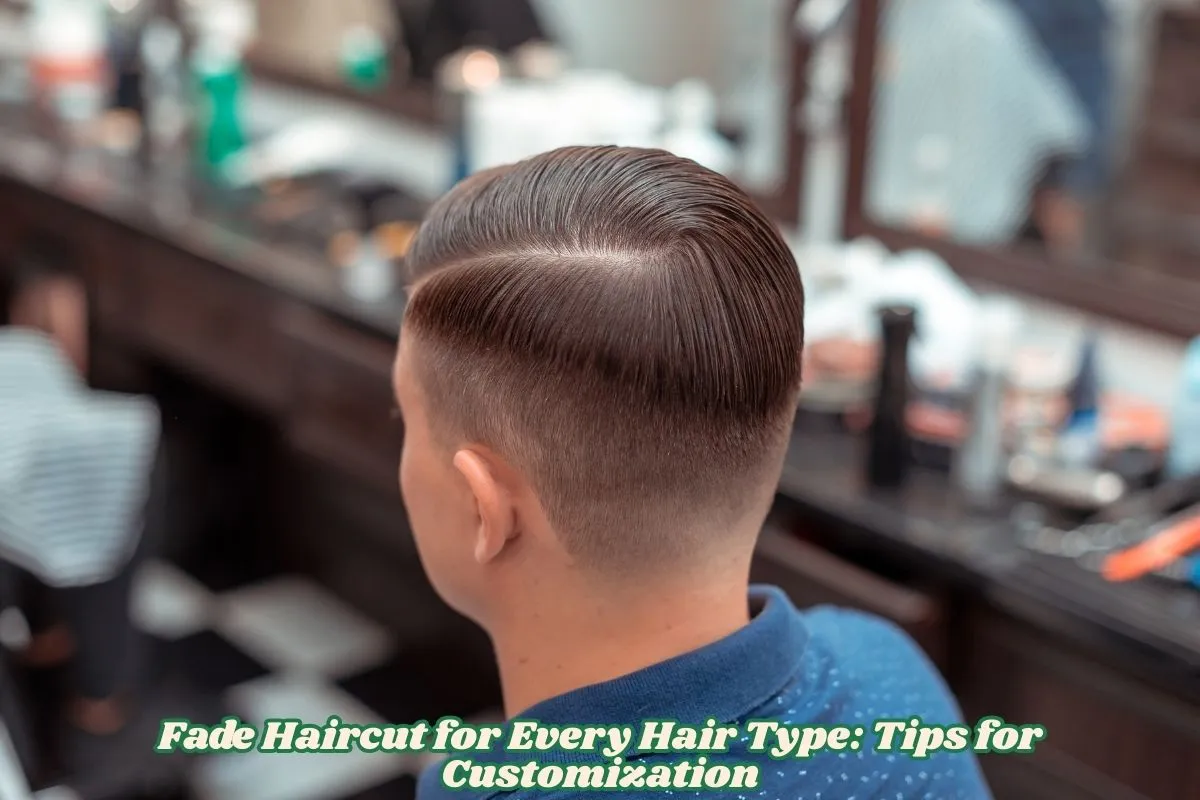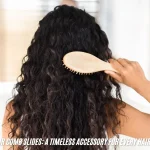The fade haircut has become a timeless style, transcending trends and evolving into a versatile look for everyone. Whether you have straight, wavy, curly, thick, or fine hair, there’s a fade that can enhance your natural texture and elevate your overall appearance. This guide dives deep into how to choose, style, and maintain a fade haircut tailored to your hair type, with expert tips, product recommendations, and personal anecdotes to help you make the best decision.
What is a Fade Haircut?
A fade haircut is a technique where the hair gradually tapers from longer lengths on top to shorter lengths on the sides and back. The result is a seamless blend that looks polished and modern. Fades are categorized into three main types:
- High Fade: Starts high on the head, creating a bold contrast with the hair on top.
- Mid Fade: Begins in the middle of the head, offering a balanced and classic look.
- Low Fade: Starts just above the ears, providing a subtle and conservative style.
Each fade type can be customized to suit your hair type, face shape, and personal style.
Here’s a table summarizing the key points about fade haircuts for different hair types, making it easy for readers to understand and choose the right fade for their hair:
| Hair Type | Best Fade Style | Why It Works | Styling Tips | Maintenance |
|---|---|---|---|---|
| Straight Hair | Low Fade | Adds volume at the crown and creates a clean, polished look. | Use light-hold gel or texturizing spray; keep the top longer for volume. | Trim every 2–3 weeks. |
| Wavy Hair | Taper Fade | Enhances natural texture and movement while keeping the sides neat. | Use sea salt spray or texturizing products; avoid heavy styling products. | Trim every 2–3 weeks. |
| Curly Hair | High Fade | Highlights curls on top while reducing bulk on the sides. | Use leave-in conditioner or curl cream; let curls fall naturally. | Trim every 2–3 weeks. |
| Thick Hair | Mid Fade | Balances density and reduces bulk on the sides. | Use matte pomade or clay; keep the top slightly longer for balance. | Trim every 2–3 weeks. |
| Fine/Thinning Hair | Low Fade | Creates the illusion of volume and adds structure. | Use volumizing powder or mousse; keep the top slightly longer for fullness. | Trim every 3–4 weeks. |
Fade Styles Based on Face Shape
| Face Shape | Best Fade Style | Why It Works |
|---|---|---|
| Round Face | High Fade | Adds height and elongates the face. |
| Square Face | Mid Fade | Softens a strong jawline and adds balance. |
| Oval Face | Any Fade Style | Complements the balanced proportions of an oval face. |
| Heart Face | Low Fade | Softens the forehead and harmonizes with a narrow chin. |
Product Recommendations by Hair Type
| Hair Type | Recommended Products |
|---|---|
| Straight Hair | Lightweight pomades, waxes, or texturizing sprays. |
| Wavy Hair | Sea salt sprays, texturizing products, or light pomades. |
| Curly Hair | Leave-in conditioners, curl creams, or hydrating gels. |
| Thick Hair | Matte clays, putties, or strong-hold pomades. |
| Fine/Thinning Hair | Volumizing powders, light mousses, or texturizing sprays. |
Maintenance Tips for Fade Haircuts
| Tip | Why It’s Important |
|---|---|
| Trim Every 2–3 Weeks | Keeps the fade sharp and well-blended. |
| Hydrate Your Scalp | Prevents dryness, especially with shorter fades. |
| Use Heat Protection | Protects hair and scalp from damage if using heat tools. |
| Consult a Skilled Barber | Ensures precision and a professional finish. |
Fade Haircuts for Straight Hair
Straight hair is naturally sleek and smooth, making it an excellent canvas for a fade. A low fade, in particular, works wonders for straight hair, as it adds structure without overwhelming the hair’s natural flow.
Why It Works:
Renowned stylist Rossano Ferretti explains, “A low fade creates a soft illusion of volume at the crown, which is perfect for fine or straight hair.” This subtle contrast enhances the hair’s natural texture while keeping the look clean and sharp.
Styling Tips:
- Pair a low fade with a longer top to maintain volume and movement.
- Use a light-hold gel or texturizing spray to add definition without weighing the hair down.
- For a sleek finish, comb the top hair back or to the side.
Maintenance:
Straight hair fades are relatively low-maintenance. A trim every 2–3 weeks will keep the fade looking fresh.
Fade Haircuts for Wavy Hair
Wavy hair has a natural texture that pairs beautifully with a fade. A taper fade, in particular, enhances the hair’s movement and adds a polished edge.
Why It Works:
Celebrity hairstylist Jen Atkin notes, “A taper fade complements wavy hair by highlighting its natural texture while keeping the sides neat.” The gradual transition of a taper fade ensures the waves on top remain the focal point.
Styling Tips:
- Use a sea salt spray or texturizing product to enhance your waves.
- Avoid heavy products that can weigh down the hair and make it look flat.
- For a casual look, let the waves fall naturally; for a more polished style, use a light pomade to define the waves.
Maintenance:
Wavy hair tends to grow out in volume, so regular trims every 2–3 weeks are essential to maintain the fade’s sharpness.
Styling Insight:
A taper fade brings out the best in wavy hair, creating a look that’s effortlessly cool and well-groomed.
Fade Haircuts for Curly Hair
Curly hair thrives with a high fade, as it showcases the volume on top while keeping the sides and back neat and tidy.
Why It Works:
Celebrity hairstylist Ursula Goff emphasizes, “A high fade highlights the natural bounce of curls while reducing bulk on the sides.” This creates a balanced look that’s both stylish and manageable.
Styling Tips:
- Use a leave-in conditioner or curl cream to define your curls and keep them hydrated.
- Avoid over-styling; let your curls do the talking.
- For a bold look, pair a high fade with a curly top that’s slightly longer.
Maintenance:
Curly hair tends to grow out in volume rather than length, so regular trims every 2–3 weeks are crucial to maintain the fade’s shape.
Fade Haircuts for Thick Hair
Thick hair can be challenging to manage, but a mid-fade is the perfect solution. It balances the hair’s natural density and reduces bulk on the sides.
Why It Works:
Celebrity hairstylist Sam McKnight explains, “A mid-fade provides structure and makes thick hair more manageable.” The gradual taper ensures the hair doesn’t look too heavy or overwhelming.
Styling Tips:
- Use a matte pomade or clay to add texture and control volume on top.
- Keep the top slightly longer to balance the fade.
- For a sleek look, comb the hair back or to the side.
Maintenance:
Thick hair grows quickly, so regular trims every 2–3 weeks are necessary to maintain the fade’s sharpness.
Styling Insight:
A mid-fade brings a clean, streamlined look to thick hair, making it easier to style while embracing its natural volume.
Fade Haircuts for Fine or Thinning Hair
A fade can work wonders for fine or thinning hair, creating the illusion of fullness and adding structure to the overall look.
Why It Works:
Ludovic Gruel, David Beckham’s barber, advises, “A low fade is ideal for fine hair, as it creates the illusion of volume on top.” The subtle contrast of a low fade ensures the hair looks fuller and more textured.
Styling Tips:
- Use a volumizing powder or light mousse to add body to the crown area.
- Keep the top slightly longer to create the illusion of thickness.
- Avoid heavy products that can weigh the hair down.
Maintenance:
Low fades are low-maintenance, so touch-ups every 3–4 weeks should suffice.
Styling Insight:
A low fade is a game-changer for fine or thinning hair, offering a fresh and youthful look that boosts confidence.
Choosing the Right Fade Based on Face Shape
Your face shape plays a crucial role in determining the best fade for you. Here’s a quick guide:
- Round Faces: Opt for a high fade to add height and elongate the face.
- Square Faces: A mid-fade balances a strong jawline and adds softness.
- Oval Faces: You’re in luck – any fade style complements an oval face.
- Heart Faces: A low fade softens the width of the forehead, harmonizing with a narrow chin.
Fade Maintenance and Hair Care Tips
Maintaining a fade haircut requires regular trims and proper hair care. Here are some tips to keep your fade looking sharp:
- Trim Regularly: Fades lose their sharpness quickly, so touch-ups every 2–3 weeks are essential.
- Hydrate Your Scalp: Use a moisturizing scalp treatment to prevent dryness, especially with shorter fades.
- Use Heat Protection: If you style with heat tools, always use a heat protectant to avoid damage.
Product Recommendations for Fade Haircuts
The right products can elevate your fade. Here’s what to use based on your hair type:
- Straight Hair: Lightweight pomades or waxes for hold without heaviness.
- Wavy Hair: Sea salt sprays or texturizing products for enhanced waves.
- Curly Hair: Leave-in conditioners or curl creams for hydration and definition.
- Thick Hair: Matte clay or putty for texture and control.
- Fine Hair: Volumizing powders or mousses for added lift.
The Cultural Impact of Fade Haircuts
Fade haircuts have roots in military and hip-hop culture, but today they’re a universal style embraced by people of all ages and backgrounds. Studies show that wearing a fade can boost self-esteem and encourage self-expression. It’s a symbol of identity, artistry, and fashion evolution.
Final Thoughts: Finding Your Perfect Fade
The perfect fade haircut is a blend of technique, personalization, and proper care. Whether you opt for a bold high fade or a subtle low fade, each style offers unique benefits that enhance your hair type and face shape. Experiment with different fade types, consult a skilled barber, and enjoy the versatility and confidence that comes with a well-executed fade.
Remember, a fade is more than just a haircut – it’s a statement of style and self-expression. So, go ahead and find the fade that suits you best!
Key Takeaways:
- Fade haircuts are versatile and suit all hair types.
- Choose a fade based on your hair type and face shape.
- Regular maintenance and the right products are key to keeping your fade sharp.
- A fade is a timeless style that boosts confidence and self-expression.
With this guide, you’re ready to rock a fade haircut that’s tailored to your unique style and hair type. Happy styling!




